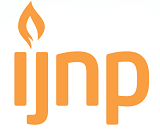Effectiveness of Nutrition Booklet to Improve Participation in The Management of Anemia in Cesarean Mothers
DOI:
https://doi.org/10.18196/ijnp.v6i1.13353Keywords:
Anemia, Cesarean, Participatory, BookletAbstract
Background: Severe postpartum anemia after cesarean is strongly associated with predelivery and postpartum Hb levels in maternal. The adverse effects of anemia impact health and economic development. WHO estimates that 12.8% of maternal deaths in Asia can be attributed to anemia.
Objective: This study aims to identify the effect of the anemia booklet on the perception, participation, and hemoglobin level of cesarean mothers in the management of anemia.
Method: This quasi-experiment with the pre-posttest without control groups design was conducted to measure the effectiveness of education using a nutrition booklet on the level of Haemoglobin and perception variable. 30 respondents were involved, and the data analysis was carried out using a Statistical test using paired t-test with a CI of 95%.
Result: The relationship between Hb before and after giving the booklet was revealed with a correlation coefficient of 0.333 and a significance of 0.84 (p-value > 0.05). Perceptions before and after understanding the booklet obtained p-value = 0.000 <0.05. Management before and after giving the booklet obtained p-value = 0.005 <0.05. The interviews found that after receiving information, mothers' perceptions improved regarding understanding anemia, recognizing signs and symptoms, preventing anemia, consuming protein, consuming drinks, and good nutrition for anemia management. After giving anemia management communication through booklets, there was an increase in the mother's participation in consuming snacks, drinking after mealtime, and improving personal and environmental hygiene.
Conclusion: Education through booklets affected maternal perceptions and management actions in preventing anemia but did not affect hemoglobin (Hb). It could also increase mothers' perception and participation in consuming snacks, drinking after mealtimes, and personal and environmental hygiene. Furthermore, nurses could use booklets as a medium of counseling.
References
Agrawal, S., Singh, A. (2016). Obesity or Underweight-What is Worse in Pregnancy? J Obstet Gynaecol India. 66(6):448-452. https://doi.org/10.1007/s13224-015-0735-4
Amini, A., Pamungkas, C. E., & Harahap, A. P. (2018). Usia Ibu Dan Paritas Sebagai Faktor Risiko Yang Mempengaruhi Kejadian Anemia Pada Ibu Hamil di Wilayah Kerja Puskesmas Ampenan. Midwifery Journal, 3(2). https://doi.org/10.31764/mj.v3i2.506
Azra, P. A., & Rosha, B. C. (2015). Factors Associated with Anemia Status of Pregnant Women in the Working Area of Air Cold Health Center, Koto Tengah District, Padang City. https://media.neliti.com/media/publications/107658-ID-faktor-faktor-yang-berhubungan-dengan-st.pdf
Awuah, R. B., Colecraft, E. K., Wilson, M. L., Adjorlolo L. K., Lambrecht, N. J., Nyantakyi-Frimpong, H., Jones, A. D. (2021). Perceptions and beliefs about anemia: A qualitative study in three agro-ecological regions of Ghana. Matern Child Nutr, 17(4): e13181. https://doi.org/10.1111/mcn.13181
Axelsson, D., Blomberg, M. (2017). Maternal obesity, obstetric interventions and post-partum anemia increase the risk of post-partum sepsis: a population-based cohort study based on Swedish medical health registers. Infect Dis (Lond), 49(10):765-771. https://doi.org/10.1080/23744235.2017.1341055
Bizuayew, H., Abebe, H., Mullu, G., Bewuket, L., Tsega, D., & Alemye, T. (2021). Post-cesarean section surgical site infection and associated factors in East Gojjam zone primary hospitals, Amhara region, North West Ethiopia, 2020. PLoS One, 16(12):e0261951. https://doi.org/10.1371/journal.pone.0261951
Bollag, L., Lim, G., Sultan, Pervez., Habib, A, S., Landau, R., Zakowski, M., Tiouririne, M., Bhambhani, S., & Carvalho, B. (2021). Society for Obstetric Anesthesia and Perinatology: Consensus Statement and Recommendations for Enhanced Recovery After Cesarean, Anesthesia & Analgesia. 132(5);1362-1377 https://doi.org/10.1213/ANE.0000000000005257
Butwick, A. J., Walsh, E. M., Kuzniewicz, M., Li, S. X., & Escobar, G. J. (2016). Patterns and predictors of severe postpartum anemia after Cesarean section. Transfusion, 57(1), 36–44. https://doi.org/10.1111/trf.13815
Chandrasekaran, N., De Souza, L. R., Urquia, M. L., Young, B., Mcleod, A., Windrim, R., & Berger, H. (2018). Is anemia an independent risk factor for postpartum depression in women who have a cesarean section? - A prospective observational study. BMC Pregnancy Childbirth. 18(1):400. https://doi.org/10.1186/s12884-018-2032-6
Chaparro, C. M., & Suchdev, P. S. (2019). Anemia epidemiology, pathophysiology, and etiology in low- and middle-income countries. Annals of the New York Academy of Sciences, 1450(1), 15–31. https://doi.org/10.1111/nyas.14092
Darmawati., Husna, C., Fitri, A., & Munira, D (2019). The Effectiveness Of High Protein Nutrient To The Post Sectio Caesarea Healing Process. Jurnal Medika Veterinaria, 13 (2), 192-199. https://doi.org/10.21157/j.med.vet..v13i2.14090
Daru, J., Zamora, J., Fernandez-Felix, Borja M. et al.(2018). Risk of maternal mortality in women with severe anemia during pregnancy and postpartum: a multilevel analysis.The Lancet Global Health, 6(5), 548-554.https://doi.org/10.1016/S2214-109X(18)30078-0
Fitri, A., Darmawati., Kiftia, M., Rizkia, M., & Syahbandi. (2020). The Relationship between Diet and Iron Deficiency Anemia in Post Partum Mothers in Dr. Zainoel Abidin Banda Aceh in 2019. JIKO (Jurnal Ilmiah Keperawatan Orthopedi), 4(2), 47-53. https://doi.org/10.46749/jiko.v4i2.40
Ferguson, M. T., & Dennis, A. T. (2018). Defining peri-operative anemia in pregnant women - challenging the status quo. Anaesthesia, 74(2), 237–245. https://doi.org/10.1111/anae.14468
Garrido, C. M., León, J., & Vidal, A. R. (2017). Maternal anemia after delivery: prevalence and risk factors. J Obstet Gynaecol, 38(1), 55–59. https://doi.org/10.1080/01443615.2017.1328669
Gelaw, M, W., Abdella, A. (2018). Prevalence Of Surgical Site Infection And Associated Factors Among Mothers After Cesarean Delivery In Zewditu Memorial Hospital. Ethiopian Journal of Reproductive Health, 10 (4): 21-32
Latef, A, A, A, E., Ghonemy, G, E., Ghany, R, M, A, E., & Ibrahim, M. (2019). Factors Influencing Iron Treatment among Anemic Pregnant Women. Saudi Journal of Nursing and Health Care, 2(10): 347-352, https://doi.org/10.36348/SJNHC.2019.v02i10.003
Mremi, A., Rwenyagila, D., Mlay, J. (2022) Prevalence of post-partum anemia and associated factors among women attending public primary health care facilities: An institutional-based cross-sectional study. PLoS ONE, 17(2): e0263501. https://doi.org/10.1371/journal.pone.0263501
Nisha, M. K., Raynes-Greenow, C., Rahman, A., & Alam, A. (2019). Perceptions and practices related to birth weight in rural Bangladesh: Implications for neonatal health programs in low- and middle-income settings. PLoS One, 14(12). https://doi.org/10.1371/journal.pone.0221691
Obando, F. L. L., Moran, R., Medrano, K. (2021). Factors associated with anemia in post-cesarean with and without COVID-19 at the Hospital Nacional Alberto Sabogal Sologuren. Anales de la Facultad de Medicina, 82(4), https://doi.org/10.15381/anales.v82i4.21077
Sivahikyako, S .A., Owaraganise, A., Tibaijuka, L., Agaba, D. C., Kayondo, M., Ngonzi, J., Mugisha, J., & Kanyesigye, H. (2021). Prevalence and factors associated with severe anemia post-cesarean section at a tertiary Hospital in Southwestern Uganda. BMC Pregnancy Childbirth 21, 674 (2021). https://doi.org/10.1186/s12884-021-04157-x
Sumarna., Nursanti, I., & Mawarti, R. (2016). Description of Anemia Incidence in Postpartum Mothers at PanembahanSenopati Hospital, Bantul. Essay.
Sunuwar, D. R., Singh, D. R., Chaudhary, N. K., Pradhan, P., Rai, P., & Tiwari, K. (2020). Prevalence and factors associated with anemia among women of reproductive age in seven South and Southeast Asian countries: Evidence from nationally representative surveys. PloS one, 15(8), e0236449. https://doi.org/10.1371/journal.pone.0236449
The World Bank. 2022. Prevalence of anemia among pregnant women (%) – Indonesia. https://data.worldbank.org/indicator/SH.PRG.ANEM?locations=ID Accessed: 18 February 2022
WHO. 2014. Global Nutrition Targets 2025: Anaemia Policy Brief. Geneva: WHOhttps://www.who.int/publications/i/item/WHO-NMH-NHD-14.4
WHO. (2015). Comprehensive Promotion and Prevention Program to Improve Health and Nutrition Status among Adolescence, Maternal, and Young Child Plans. Translation Indriastuti, Yustina A., Achadi, Endang L., and Latief, Dini. Promotive and Preventive Comprehensive Plan.
Zhao, A., Zhang, J., Wu, W., Wang, P., & Zhang, Y. (2019). Postpartum anemia is a neglected public health issue in China: a cross-sectional study. Asia Pac J Clin Nutr, 28(4):793-799. https://doi.org/10.6133/apjcn.201912_28(4).0016
Downloads
Published
Issue
Section
License
License
Articles published in the IJNP (Indonesian Journal of Nursing Practices) are licensed under a Attribution 4.0 International (CC BY 4.0) license. You are free to:
- Share — copy and redistribute the material in any medium or format.
- Adapt — remix, transform, and build upon the material for any purpose, even commercially.
This license is acceptable for Free Cultural Works. The licensor cannot revoke these freedoms as long as you follow the license terms. Under the following terms:
Attribution — You must give appropriate credit, provide a link to the license, and indicate if changes were made. You may do so in any reasonable manner, but not in any way that suggests the licensor endorses you or your use.
- No additional restrictions — You may not apply legal terms or technological measures that legally restrict others from doing anything the license permits.
Copyright
Authors who publish with IJNP (Indonesian Journal of Nursing Practices) agree to the following terms:
- Authors retain copyright and grant IJNP (Indonesian Journal of Nursing Practices) the right of first publication with the work simultaneously licensed under an Attribution 4.0 International (CC BY 4.0) that allows others to remix, adapt and build upon the work with an acknowledgment of the work's authorship and of the initial publication in IJNP (Indonesian Journal of Nursing Practices).
- Authors are permitted to copy and redistribute the journal's published version of the work (e.g., post it to an institutional repository or publish it in a book), with an acknowledgment of its initial publication in IJNP (Indonesian Journal of Nursing Practices).














